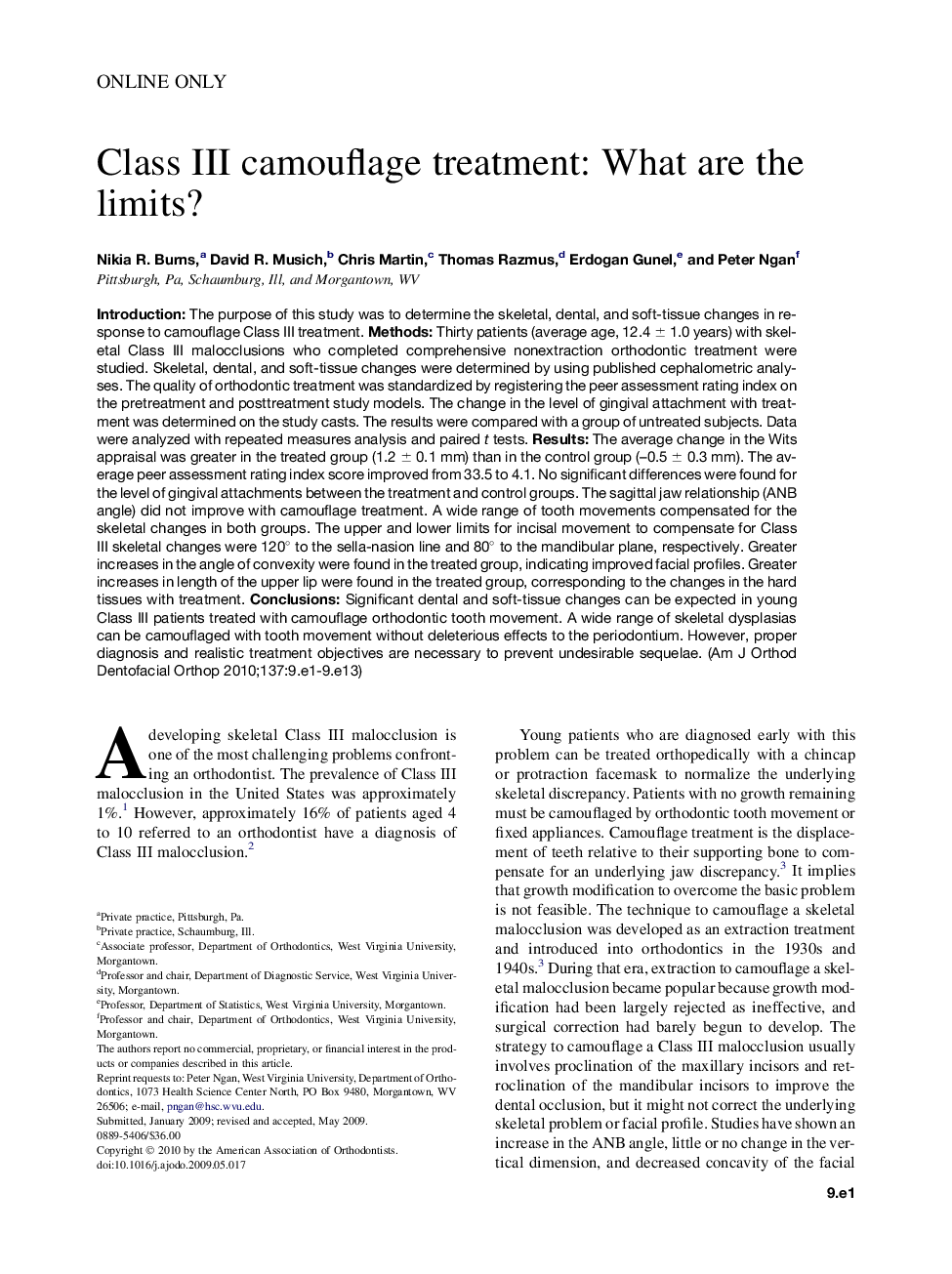| Article ID | Journal | Published Year | Pages | File Type |
|---|---|---|---|---|
| 3117832 | American Journal of Orthodontics and Dentofacial Orthopedics | 2010 | 5 Pages |
IntroductionThe purpose of this study was to determine the skeletal, dental, and soft-tissue changes in response to camouflage Class III treatment.MethodsThirty patients (average age, 12.4 ± 1.0 years) with skeletal Class III malocclusions who completed comprehensive nonextraction orthodontic treatment were studied. Skeletal, dental, and soft-tissue changes were determined by using published cephalometric analyses. The quality of orthodontic treatment was standardized by registering the peer assessment rating index on the pretreatment and posttreatment study models. The change in the level of gingival attachment with treatment was determined on the study casts. The results were compared with a group of untreated subjects. Data were analyzed with repeated measures analysis and paired t tests.ResultsThe average change in the Wits appraisal was greater in the treated group (1.2 ± 0.1 mm) than in the control group (–0.5 ± 0.3 mm). The average peer assessment rating index score improved from 33.5 to 4.1. No significant differences were found for the level of gingival attachments between the treatment and control groups. The sagittal jaw relationship (ANB angle) did not improve with camouflage treatment. A wide range of tooth movements compensated for the skeletal changes in both groups. The upper and lower limits for incisal movement to compensate for Class III skeletal changes were 120° to the sella-nasion line and 80° to the mandibular plane, respectively. Greater increases in the angle of convexity were found in the treated group, indicating improved facial profiles. Greater increases in length of the upper lip were found in the treated group, corresponding to the changes in the hard tissues with treatment.ConclusionsSignificant dental and soft-tissue changes can be expected in young Class III patients treated with camouflage orthodontic tooth movement. A wide range of skeletal dysplasias can be camouflaged with tooth movement without deleterious effects to the periodontium. However, proper diagnosis and realistic treatment objectives are necessary to prevent undesirable sequelae.
